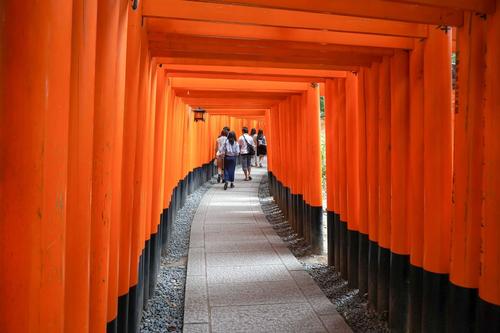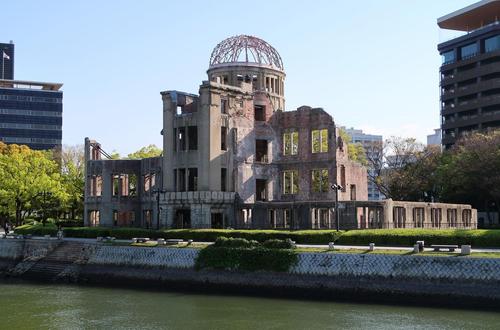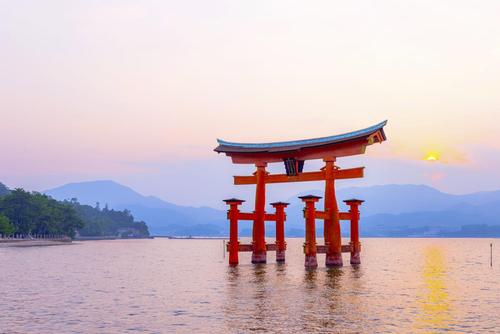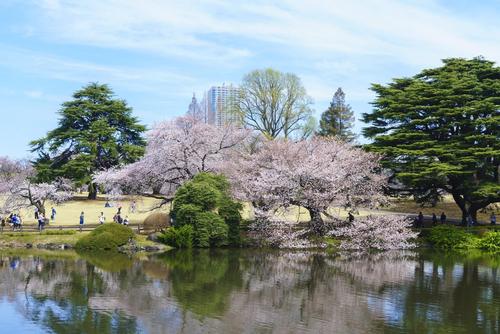Compared to a few decades ago, Japan has become more internationalized, and there are more opportunities to meet foreign tourists in various places.
So, this time, I would like to introduce some tourist spots in Japan that are popular with foreign tourists.
By learning about popular spots among foreigners, you'll be able to see the good things about your own country from a different perspective!
How many foreign tourists visit Japan?

As I mentioned at the beginning, Japan is becoming more international, and the number of tourists visiting Japan each year continues to increase every year.
Based on data released by JNTO, we looked at the number of tourists over the past five years and found the following:
December 2014: 1,236,000 people
December 2015: 1,773,000 people (For the first time in 45 years, the number of foreign visitors to Japan surpasses the number of Japanese people leaving the country!)
December 2016: 2,051,000 people
December 2017: 2,521,000 people
December 2018: 2,632,000 people
May 2019: 2,773,000 people
As such, the number of foreign tourists entering Japan continues to increase year by year.
There is still half a year left in this year, but as of May, the number of cases has already exceeded the total for the entire year of 2018!
Furthermore, with the Japanese government setting a goal of attracting 40 million foreign tourists to Japan ahead of the 2020 Tokyo Olympics, it is expected that the number of foreign tourists visiting Japan will continue to increase.
Top 10 popular spots for foreign tourists

Here we introduce 10 popular spots for foreign tourists.
1. Fushimi Inari, Kyoto Prefecture
Fushimi Shrine is the head shrine of all the Inari shrines scattered across the country. It enshrines the god Inari, who is in charge of bountiful harvests, but many people also visit to pray for prosperity in business and safety in their homes.
The shrine is impressive with its thousand red torii gates, creating a mystical atmosphere.
It's easily accessible from Kyoto Station and is a popular tourist spot, having been ranked number one for five consecutive years in surveys of foreign tourists.
2. Hiroshima Prefecture "Atomic Bomb Dome"

The atomic bomb dropped on Hiroshima brought an end to the war between Japan and the U.S. The Atomic Bomb Dome still vividly depicts the situation at the time.
The museum is also known as the "Atomic Bomb Museum" because it displays dolls resembling those exposed to radiation, actual photographs, and detailed information about the historical background leading up to the atomic bomb.
It's an experience that makes you think more deeply about war and what you can do to contribute to world peace in the future...it's something that can only be conveyed in Japan, the only country in the world where an atomic bomb was dropped.
3. Miyajima, Hiroshima Prefecture

Miyajima is not only full of activities such as swimming and BBQs, but is also home to Itsukushima Shrine, a World Heritage Site.
Itsukushima Shrine is famous as one of the three most scenic spots in Japan, and the sight of the red torii gate floating on the water when the tide is high is breathtakingly beautiful.
As Miyajima is an island floating in the Seto Inland Sea, we recommend spending your time enjoying the island's natural beauty to the fullest.
4. Todaiji Temple, Nara Prefecture

Todaiji Temple, a representative Great Buddha Hall of the Nara period, is also known as the "Temple of the Golden Light Four Heavenly Kings, Protector of the Country."
As it is one of the largest wooden temples in the world, the size of the Great Buddha Hall inside the temple is unbelievable! In addition to the impressive power of the Great Buddha Hall, another great point is that you can see this delicate and dynamic wooden architecture up close.
5. Shinjuku Gyoen National Garden, Tokyo

Shinjuku Gyoen is a modern Western garden representative of the Meiji period, built in 1906 as an imperial garden.
The garden is home to over 10,000 trees, allowing you to enjoy the changing seasons with all your senses.
The garden also contains historical buildings such as the Former Western-style Rest House and the Former Goryotei Pavilion, where you can learn about the history of the Imperial family, and is known as a relaxing spot that will help you forget about the city.
6. Kenrokuen Garden, Ishikawa Prefecture
Kenrokuen, one of Japan's three most famous gardens, is a historic garden that is said to have been built in 1676.
You can enjoy a stroll here all year round, with cherry blossoms in full bloom in spring and golden snow in winter.
There are plenty of tea stalls in the park, including those selling matcha, so you can experience the Japanese way of enjoying nature while taking a break with a cup of tea.
7. Mount Koya, Wakayama Prefecture
Mount Koya in Wakayama Prefecture is famous for its Okunoin, which is a nationally designated historic site.
Okunoin is located in Kongobuji Temple, the head temple of the Koyasan Shingon sect, and is a 2km walk from Ichinohashi to the mausoleum. Along the way, you will see over 200,000 gravestones, prayer monuments, and memorials of various feudal lords, creating a solemn atmosphere.
The path to the inner sanctuary is enveloped in a solemn and sacred atmosphere, so it's best to walk slowly and be aware of your surroundings.
8. Kinkakuji Temple, Kyoto Prefecture
Kinkaku-ji Temple, one of the most famous temples in Kyoto, was built in 1397 as the residence of Ashikaga Yoshimitsu.
It is called "Kinkaku-ji" because not only the exterior but also the interior is covered in gold leaf, but what many people don't know is that its official name is "Rokuon-ji."
Since being registered as a World Heritage Site as part of the "Cultural Monuments of Ancient Kyoto," it has become a popular spot attracting tourists from all over the world!
9. Hakone Town, Kanagawa Prefecture
Hakone Town in Kanagawa Prefecture is dotted with view spots where you can see Mount Fuji, a World Heritage Site.
Hakone is home to plenty of hot springs and accommodations, but the Hakone Open-Air Museum, which opened in 1969, is an open-air museum that is extremely popular with foreign tourists!
There is a wide variety of unique sculptures on display across the vast grounds, and there are plenty of photogenic spots to take photos, so you can enjoy walking around the museum.
There is also a foot bath on the premises, so if you get tired you can relax by soaking your feet in the bath.
10. Himeji Castle, Hyogo Prefecture
Himeji Castle, the first castle in Japan to be registered as a UNESCO World Heritage Site, is also known as "White Heron Castle" because its white plaster exterior walls resemble a flying white heron.
The various mechanisms inside the castle are all very interesting, so we recommend taking your time to explore each floor, all the way up to the castle tower on the 6th floor!
Himeji Castle is also famous for its beautiful nighttime illuminations. Its imposing appearance is indescribable and seems to tell the story of Japanese history.
summary
Many of the popular tourist spots for foreign tourists are places where you can get a feel for Japanese history or a glimpse of the delicate craftsmanship that is unique to Japan.
Even as Japanese people, there are still many things we don't know.
I hope this article will give you an opportunity to think again about Japanese history and culture.
Mini lesson corner
This article has been partially re-edited by KARUTA from an article originally published on "Nihongo Biyori."
Any unauthorized reproduction or use of the contents, text, images, illustrations, etc. of this website is strictly prohibited.
